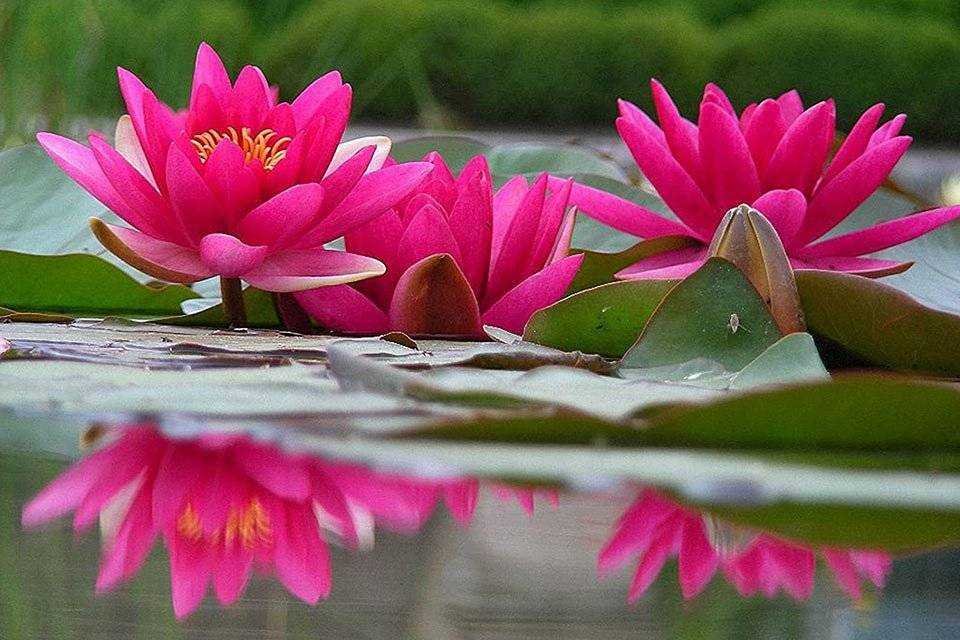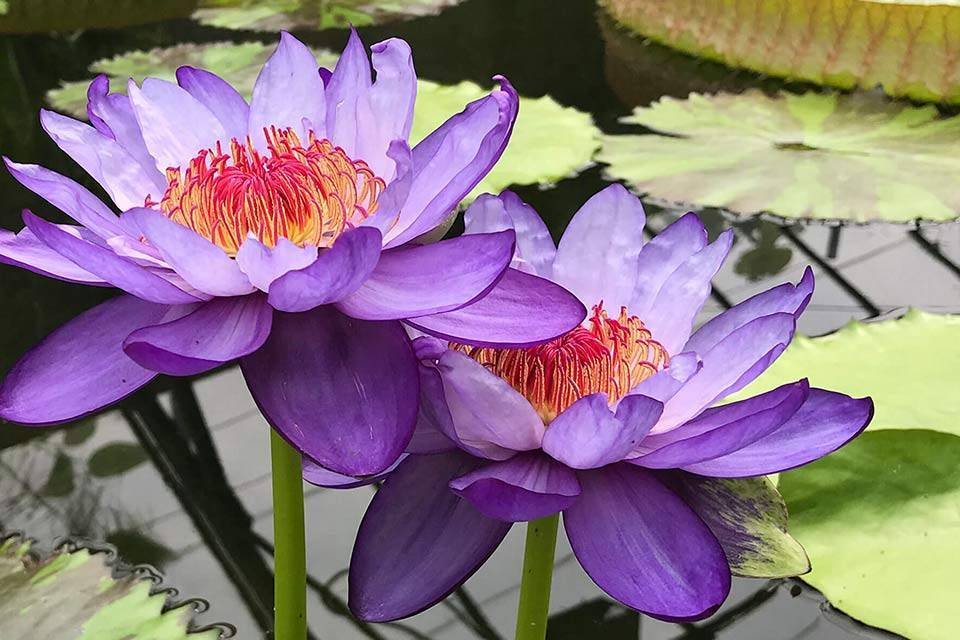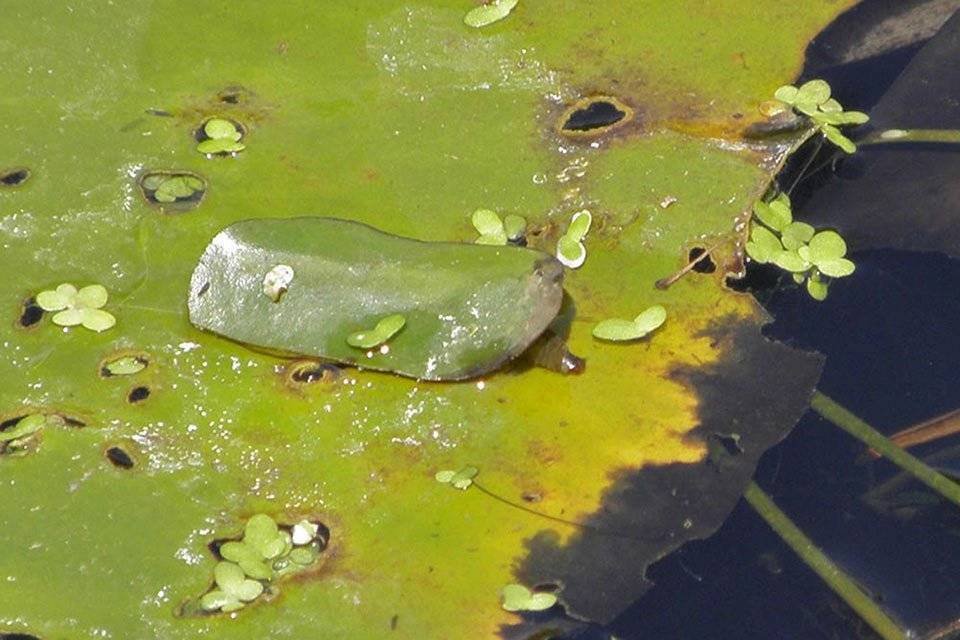Beautiful Plants For Your Interior
How to Grow Water Lilies

Water lilies are beautiful aquatic plants that can add a serene and tranquil atmosphere to any pond or water feature. Growing water lilies can be a rewarding hobby and relatively easy with the right conditions and care.
However, it’s essential to know the proper techniques to grow these plants successfully. In this post, we will explore some tips on how to grow water lilies so that you can create a stunning and healthy aquatic garden.
You may be wondering how to grow water lilies in your garden. Then if you are there, here are a few important quick tips for ensuring you get the best growth results possible.
Ensure you choose a cultivar to suit both the size and the depth of your pond. Due to the British weather, you should also look for a ‘hardy’ variety for our northern climate, if they are to be kept outdoors in the winter. Tropical varieties will not survive in cold water and must be brought indoors for the winter.
Such expert advice you can get from your nearest aquatic garden centre, they will only be too glad to help you.
Note: Our advice below is based on buying and using ‘bare’ root plants in early spring, of course, you may wish to buy plants ‘already growing’ in an aquatic basket in late spring/summer. You can, however, still follow some or all these guidelines for growing water lilies in your garden.
The first thing is to choose an aquatic basket of a suitable size to support the cultivar of water lilies you wish to grow. If you are a beginner, we suggest baskets around 60cm – 70cm in width, this is a good size to start with.
We would also advocate the use of a ‘basket’ and not a pot to place your lilies in; irrespective of whether your pond has a clay/silt bottom or a fibreglass pond. The basket, whichever size you choose should be then ‘lined’ with a ‘landscape fabric’ to stop your soil from dissipating into the pond water when placed.
Want a Different Size? Check out the Lily Sizes Below and get Baskets to Suit.
Secondly, you need to ensure you use the right soil for your water lilies. Avoid using ordinary ‘potting mix’ as it may contain ‘additives’ that encourage the growth of algae in your pond. Instead, use an aquatic compost for the best results. In addition, we suggest that when you have covered the rhizome to within 50% of the top of the basket cover the soil to the top with pea gravel to stop any fish digging at your water lily.
Last tip, you should plant aquatic fertiliser pellets into the soil during the lily planting process and before you place them in your pond.
Water Lilly Plant Sizes and Water Depths to Gauge Basket Size:
Dwarf/small lily cultivars reach 1–2ft (30–60cm) wide, and need water 12–18in (30–45cm) deep.
Medium lily cultivars reach 2–4ft (60–120cm) wide and need water 18–30in (45–75cm) deep.
Large lily cultivars reach up to 8ft (2.4m) wide and need water 30in–4ft (75–120cm) deep.

How to Grow Waterlilies: Water Lilies Come In Many Varying Sizes And Colours
Planting Instructions for Water Lilies
Now you have read our quick tips above you are ready to start planting your first water lily. Let’s proceed with the following more ‘detailed’ planting instructions.
Once you have chosen your lily variety, proceed to fill your basket with suitable ‘aquatic compost’ to 50% of the depth from the bottom of your basket ensuring you get a good soil compaction.
Then place your rhizome (one per basket) at a 45-degree angle with the ‘roots’ facing or even touching the edge of your basket. Ensure that your ‘basket’ is wide enough (depth is not particularly important but should be suitable for your pond depth) to allow for both the size of your preferred rhizome and the ‘growth’ of the lily; as water lilies grow ‘horizontally’ across your basket not vertically down like most plants.
Once your rhizome is placed, proceed to cover the rest of your lily to within 1in (25mm) or so from the top of your basket with the remainder of your aquatic soil. Again, ensure good compaction, once done, remember to ‘push in’ your fertiliser pellets at this point too. Fill the remaining space with washed ‘pea gravel’ as described above. This will lessen the chances of your fish digging out your newly planted rhizomes, that’s it! You are done with this planting up stage.
Maybe Additionally, for that little bit of ‘extra’ protection of your rhizome, you can try placing a ‘small stone’ on top of the pea gravel at the rhizome base and just push it in slightly so it’s firm.
How to Growing Waterlilies: Planting and Placing Your Lilies
Placing Your Water Lilies
Now you have completed the planting up stage place the basket so that the growing tip is approximately 3/4″ (22mm) above the surface of the water. It’s important to know water lilies need at least ‘six hours’ of direct sunlight a day to thrive and bloom.
This is now the most important time (spring/summer) to plant your water lily. Some lilies will, however, also survive in partial shade if your pond is in a shady area; partial shade is acceptable for occasional blooms. Just ask at your aquatic garden centre which lilies are best suited for this.
Also, when planting your new water lilies, ensure they’re placed in a relatively calm part of the pond, preferably away from any waterfalls or fountains and ensure to use the fertiliser pellets every ‘two weeks’ or so during the growing season to ensure your water lilies are well fed.
Continued Care Of Water Lilies
Water lilies are rooted aquatic plants that grow in fresh bodies of water. The most important care tip for waterlilies is to use a pot specifically designed for aquatic plants as described above; this is an aquatic basket. Besides regular fertilisation, you should endeavour to cut off dead flowers or trim them to encourage many more blooms.
Water Lily Pests
Continuing care also means keeping an eye out for waterlily pests. Some common pests include waterlily beetles, aphids, leaf spot, leaf mining midges and Brown China-mark moths.
These pests we will cover in depth in a separate article, but briefly:
We advise you not to use pesticides on aquatic plants as you run the risk of endangering other wildlife and pondlife they may visit; this warning also includes your fish of course. Far better to try and remove leaves, and pests by hand; only if it is safe to do so of course. Ensure all ‘infested’ leaves are removed quickly to avoid further infestations.
Some other experts advocate just ‘spraying’ your plants with a powerful water jet washer to try and ‘wash’ away larvae and adults. Your fish will no doubt love you for this method.

How to Grow Waterlilies: Rounded Holes Formed In The Lily Leaves By The Brown China-Moth Caterpillar.
More About Water Lilies And Their Varieties
If you are looking for a unique and tropical-looking plant for your pond or water garden, you are probably looking at growing water lilies right, that is why you are here. These beautiful plants are not difficult to grow but they require certain conditions to thrive as we have laid out above.
Lilies flower all summer long, provide a unique accent to your landscape, and are not only beautiful but can also be very hardy dependent on variety.
Water lilies have colourful flowers with some having several stamens. Others open only in the morning or evening, attracting pollinators. Water lilies produce a berry-like fruit, which ripens underwater. The leaves of some species are submerged, making them ideal for water gardens and other float. Water lilies are generally perennial plants, but some species are annual and short-lived.
When planting water lilies, be sure to plant them when the water temperature reaches around 69°F (20°C), otherwise, you will risk killing them or stunting them. Gradually lower them into the required depth of the water as the plant grows. Established water lilies can then remain at their desired depth for the rest of the year.
There are many different varieties of water lilies that are available in the UK market. You should consult your local aquatic nursery specialist if in any doubt or shop online if you know what you want.
Some popular lily varieties you may wish to consider though are:
The Small and Dwarf Waterlily Variety, needed, water depth around 12-18in (30-45cm).
The Medium Waterlily Variety, needed, a water depth of around 18-30in (45-75cm).
The Large waterlily variety, needed, a water depth of around 2.5-4ft (75cm-1.2m).
FAQs
When Should I Plant Water Lilies?
The best time to plant water lilies is in the spring or early summer when the water temperature has reached around 15°C (59°F). This allows the plants to establish their roots before the hot summer months.
How Long Do Water Lilies Take To Grow?
With the right conditions (full sun or shade dependent on variety) and care (pest control) waterlilies will take around 5-6 months to grow to their maximum spread and height
How Long Do Water Lilies Last?
Water lily flowers do not last that long generally between 2-6 days. Unless they are a nocturnal variety the flower opens during the daytime and closes at night.
Once flowering is over the flower dies and gradually sinks into your pond or water feature and should be cut and removed to encourage more flowers.
Conclusion
We hope you found our ‘How to Grow Water Lilies’ informative. As you can see growing these beautiful plants is not difficult. With just a few points to remember, you will be able to grow your own lilies at home and be the envy of your neighbours.
Don’t forget to visit our FAQ page for many more gardening tips, tricks and information on a whole host of subjects for the home and garden.
